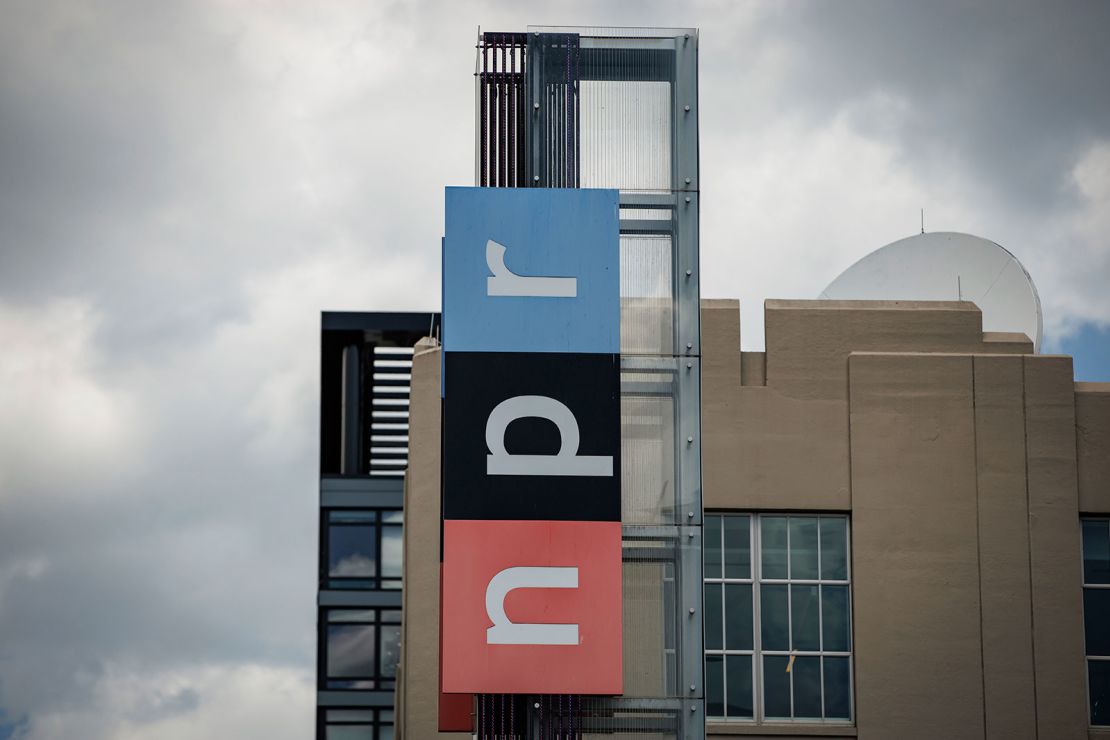CNN
—
PBS and NPR stations are on the verge of losing the federal funding that has helped keep them on the air for decades.
The Senate is preparing to vote on a rare measure called a “rescission,” which would claw back money that was already budgeted by Congress, including nearly $1.1 billion in funding for public media.
Here’s what will happen if lawmakers zero out the funding for PBS and NPR.
What will viewers and listeners notice?
Over time, some local stations may be forced off the air, while other stations may have fewer shows to broadcast. Stations may have fewer resources for news reporting and educational programming. But the exact impacts are hard to predict because the public radio and TV system is complex.
The center of the system is the Corporation for Public Broadcasting, or CPB, an independent entity established by Congress in the 1960s to support local radio and TV stations across the United States.
CPB receives $535 million in taxpayer support annually and disburses the funds to about 1,500 local radio and TV stations, as well as programmers and infrastructure providers. Those funds are what President Trump and congressional Republicans are trying to revoke. Democrats want the funds to remain in place.
Trump’s rescission proposal targets CPB’s federal funding for the period from October 2025 through September 2027, so if the money is taken back, stations will face budget shortfalls starting this fall. Some public media executives are already planning layoffs and other cost-cutting moves.
PBS and NPR affiliates have numerous other sources of revenue, including donations from “viewers like you,” as the famous PBS phrase goes. But the federal funding has historically served as the foundation of the proverbial house.
“For every public dollar provided, stations raise nearly seven dollars from donors, including state and local governments, universities, businesses, foundations and individual viewers and listeners,” according to CPB.
Yes and no. Bigger stations in metro areas will have an easier time making up the deficits than smaller stations. If the Senate adopts the rescission, some big-city public media outlets will launch fundraising campaigns immediately.
But smaller stations, particularly those in hard-to-reach areas, tend to be more reliant on federal funding. In some cases, the taxpayer dollars are directly keeping the lights on and the broadcast antennas functioning. Without that federal support, some broadcasters in rural areas will go dark, according to officials who spoke with CNN.
No, but stations will generally have less money to spend on programming, which will hurt the marketplace of noncommercial TV and radio.
“Daniel Tiger’s Neighborhood” is one of a half dozen children‘s shows produced by Fred Rogers Productions, the nonprofit behind “Mister Rogers’ Neighborhood.”
Fred Rogers Productions receives millions of dollars per year in grants, including those from CPB, as well as licensing revenue from local PBS stations that carry its programs. If the stations have fewer dollars to spend, then producers will eventually feel the pinch.
Acclaimed documentary filmmaker Ken Burns recently told CBS that “I couldn’t do any of the films I’ve done without them being on PBS.“

What about the national NPR and PBS networks?
In the public media system, money flows out from CPB to localities, then returns to the national entities through dues and fees from member stations. That is how NPR funds “Morning Edition” and “All Things Considered,” for example.
“While federal funding makes up only 1% of NPR’s revenue, member station fees make up a 30% share,” the organization recently explained to listeners.
So the national operations are bracing for the domino effect that would ensue if funding dries up in the fall.
NPR has made the case to listeners that “elimination of federal funding would ultimately result in fewer programs, less journalism — especially local journalism — and eventually the loss of public radio stations, particularly in rural and economically distressed communities.”
The current tug-of-war over the public media budget is the culmination of several decades of political battles. Conservative activists have long argued that taxpayer support for TV and radio is simply unnecessary and fiscally unwise.
“Nowhere in the Constitution does it say Congress should fund a national media,” the libertarian Cato Institute, which has been urging Congress to defund CPB since the 1970s, says on its website.
Opponents also argue that the public broadcasting model is obsolete in the streaming era. But for Trump and some of his strongest supporters, the primary objection to NPR and PBS is perceived bias. The Trump White House has portrayed public broadcasting as “radical, woke propaganda disguised as ‘news’” and claimed that the news operations exist to help Democrats and hurt Republicans, which the networks deny.
Some moderate Republicans have acknowledged that the public media system has value. Sen. Susan Collins on Tuesday called the cuts to CPB “excessive” and said “local TV and radio stations continue to provide important coverage.” Collins said she would support defunding NPR at the national level, however, due to its “biased reporting.”
What are Democrats saying and doing?
Congressional Democrats lack the votes to stop the rescission package. But they are vocally defending the public media system. Sen. Maria Cantwell said last week that zeroing out the PBS and NPR funds is a “reckless endangerment of 13 million Americans who depend on these stations for lifesaving emergency information.”
Sen. Bernie Sanders asserted that Trump wants to defund the networks because, “like all authoritarians,” he “doesn’t like criticism or objective reporting.”
Anna M. Gomez, the lone Democrat on the Republican-controlled Federal Communications Commission, also linked the pending cut to Trump’s broader campaign against the media. “This isn’t about saving money,” Gomez wrote on X. “It’s about silencing those who report the news accurately, without fear or favor.”
Source link